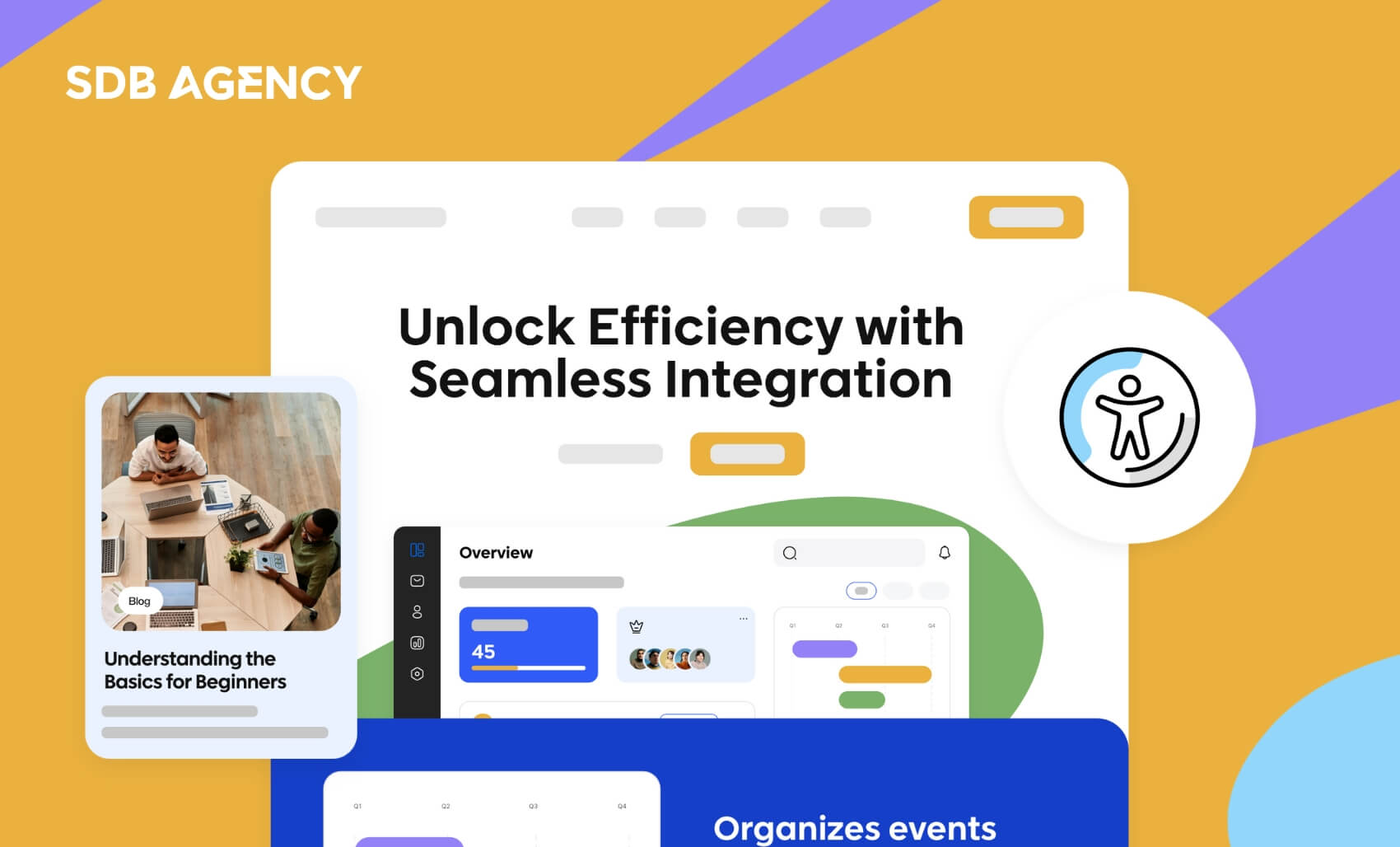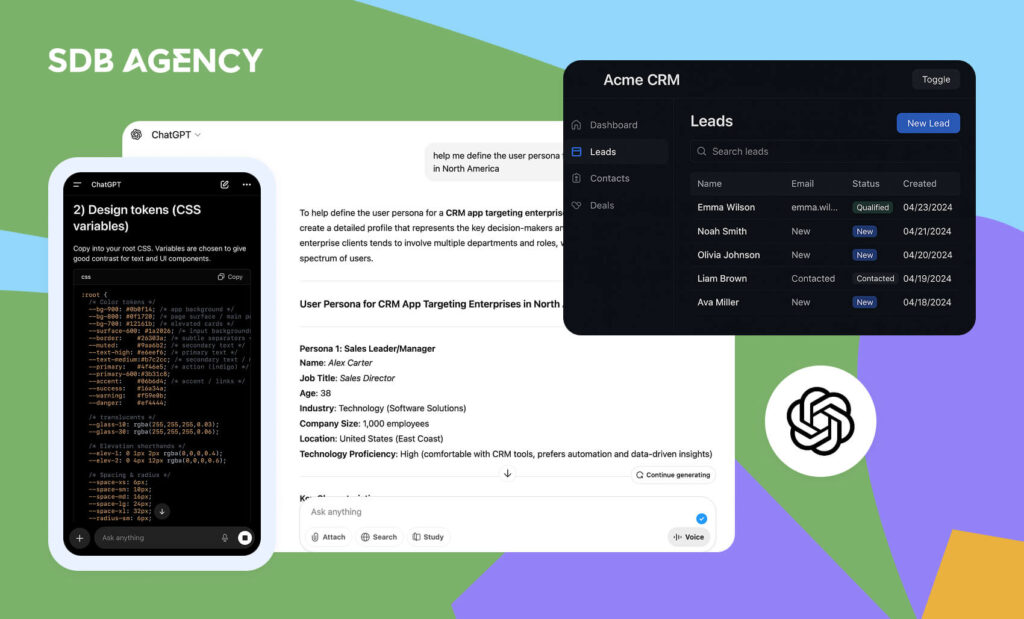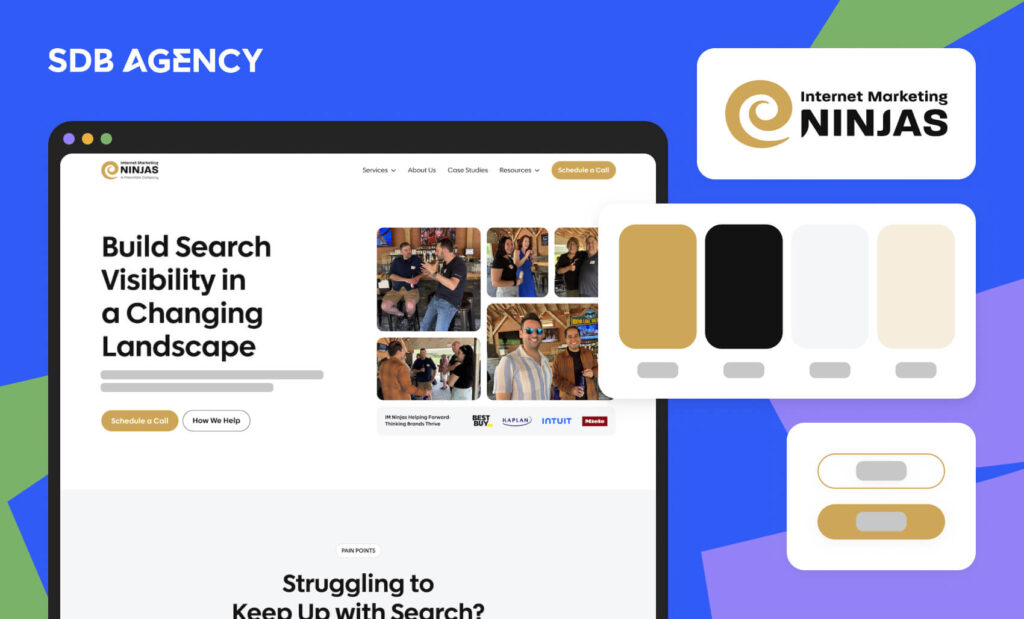Common Mistakes to Avoid During a Website Revamp

Key takeaways
- A website redesign will give your website a fresh new look that will attract more of the right customers while complying with all the new rules set by Google.
- There are common website redesign mistakes that you should avoid, including not prioritizing accessibility, not considering a responsive design, and prioritizing aesthetics over functionality.
- Therefore, to ensure a successful website, prioritize accessibility, ensure that your site is fully responsive, and find the balance between visuals and user experience.
Over 70% of your website’s credibility is due to its design. This shows that websites are the online representation and foundation of your business. They are your assets that must be maintained and updated according to the changing environment and evolving technology. However, not every website redesign project will be smooth sailing.
If you’re looking for the common mistakes of a website revamp, you’re in the right place as this blog will give you all the insights!
5 common mistakes to avoid when redesigning your website
Before we uncover the mistakes, you should know why a website revamp is important. It’s common for website owners to redesign their websites because visitors don’t find them attractive or are out of date – basically they don’t generate sales.
Besides that, while some businesses focus on improving their products and services, others want to present themselves in a new light. In this case, a redesign will give your website a fresh new look that will attract more of the right customers and check all the new “rules” set by search engines.
Visitors may find your business less worthy when they find many website design issues. Whether building a site from scratch or refreshing your current website, avoiding these common mistakes will make your business stand out for all the right reasons.
1. Forgetting accessibility
Not prioritizing accessibility may be the number one website mistake. According to experts on HubSpot, here are the three main errors regarding accessibility:
- Lack of color contrast: This accessibility error occurs because businesses make websites that feature their brand’s color palette, which may not be created with accessibility in mind.
- Missing or inaccurate alternative text for images and graphics: Visitors who use screen readers rely on image alt text to describe an image on a web page. If missing, you’re isolating readers who depend on it to browse your site.
- Lack of visual focus indicators: Visual indicators usually appear as outlines around interactive elements like links and buttons. Without them, visitors won’t experience your site to its full potential.
2. Not prioritizing a responsive design
In the second half of 2022, mobile devices contributed almost 60% of the website traffic—and this doesn’t even include iPads and tablets. If your website works well on desktop but isn’t fully optimized for mobile, you may risk frustrating your visitors and increasing bounce rates.
Today’s users visit websites through their phones, tablets, laptops, and even Smart TVs more than ever before. If your website looks poor on even one of these devices, users will lose interest and click away from your site.
This mistake occurs because designers and developers usually build websites in a desktop browser and assume that customers will view them in that format, forgetting that users also use mobile devices.
3. Prioritizing aesthetics over user experience
One website design mistake that recently gained momentum is compromising user experience for aesthetics.
Following the trend is crucial for success, as the internet has experienced an explosion of new design and media over the years. However, many businesses forget that excessive graphic and design elements that elevate users’ senses may also cause them to feel disconnected from the website’s true purpose.
This presents itself in many forms, from design trends that diminish the brands’ value proposition to excessive use of content, animation, and heavy graphics that improve the overall aesthetics but ultimately become useless. This doesn’t mean every brand should always be minimalistic, but it’s about striking the right balance and focusing on function instead of looks.
4. Not focusing on customization
Think of your website as your online storefront. It should reflect how your product and the feel of your business. One of the most significant website design mistakes is to choose a cookie-cutter template without customizing it.
For example, the default standard hero banner may prove counteractive. We’ve all seen the full-width image under the navigation, usually in white or black text with a button at the top.
The image is either light, dark or cropped to make the text legible. It’s so common that every user expects it, and it becomes boring. What was an eye-catching design decision before has become monotonous.
5. Features that don’t convert
Another error is the use of inefficient features. No matter how aesthetically pleasing your design element may be, remember that your priority is its effectiveness. Often, websites bring out rotating carousels that feature multiple pieces of content at the same time.
Plenty of research has revealed that users don’t usually interact with carousels, especially on mobile, where the interaction cost is high.
3 ways to fix these common website design errors
Now that you know some of the most frequent website design mistakes, let’s look at ways to resolve them and create a website that features a website design’s best practices.
1. Prioritize accessibility
Web accessibility means creating websites with all information accessible to every user. Therefore, choosing the right elements is crucial when designing a website.
When you create any accessibility mistakes in websites, you also generate usability barriers for people with some disability. Even if you have an amazing-looking site, if specific users can’t access your content, your website isn’t meeting its full potential of meeting your business goals and needs.
2. Ensure a fully responsive website
A responsive website ensures that no matter how visitors access your site, they will have a seamless experience.
Think about the pages of your website that will be most valuable to your visitors, then consider how it will look on a smaller screen. The goal is to ensure that visitors will understand your content, no matter the device and screen size.
3. Strike the right balance of visuals and user experience
Successful websites offer the right balance of aesthetic appeal and seamless user experience. This allows users to navigate through pages and find what they’re looking for.
Achieving this usually requires effective communication, and design teams must align well with the Development, Content, and SEO teams.
Boost your website’s credibility by avoiding common redesign mistakes
Avoiding the most common website design mistakes will boost your website’s credibility and provide an experience your visitors will appreciate.
Remember that web design is a “team sport” that requires an approach that ensures good team alignment and user knowledge. One way to ensure success is by continuous testing and iterating, including usability testing and user research, to ensure your website is moving in the desired direction.




